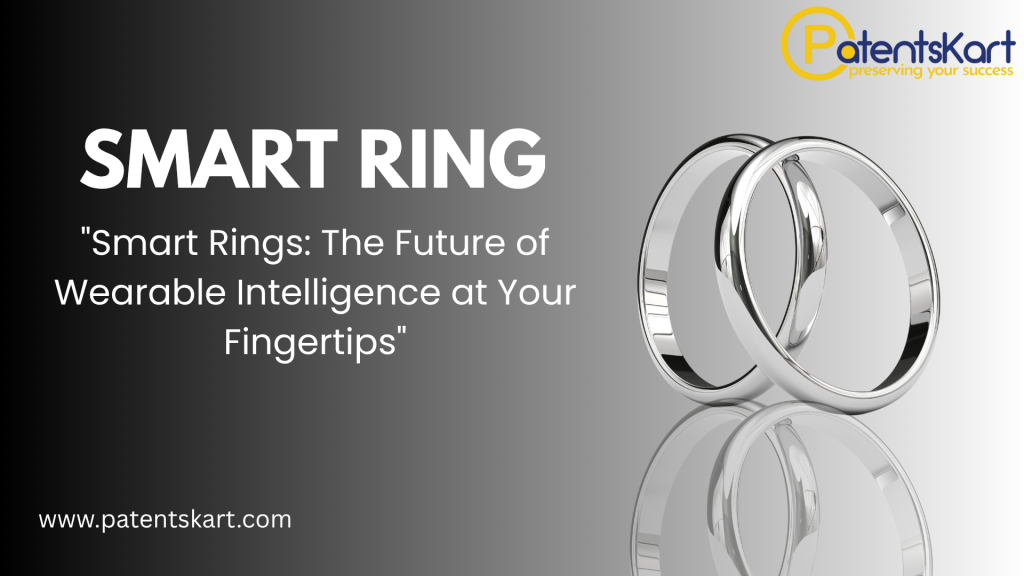What is Smart Ring Technology and Why Is It Gaining Popularity in 2025?
• Smart ring technology – Smart ring technology is a cutting-edge innovation in the wearable device space, integrating miniature biometric sensors, wireless modules (like Bluetooth and NFC), and advanced AI algorithms into a sleek, compact ring. Unlike bulky smartwatches or fitness bands, smart rings provide discreet, always-on functionality while being stylish enough for everyday wear. These rings empower users to monitor their health in real time, control smart home devices with gestures, and even complete contactless payments—all from a device worn on the finger. In 2025, smart ring technology is not just a trend; it’s a convergence point for healthcare, fintech, and IoT ecosystems.
• Real-time health monitoring – One of the most compelling features of smart ring technology is its ability to track real-time health data. Equipped with sensors like photoplethysmography (PPG), electrodermal activity (EDA), and skin temperature probes, smart rings continuously measure key health indicators such as heart rate, blood oxygen saturation (SpO2), heart rate variability (HRV), and skin temperature. This constant data stream allows users to catch signs of illness, stress, or fatigue early. Compared to wrist-worn devices, smart ring technology offers superior accuracy due to its proximity to arteries in the fingers, making it ideal for proactive health management.
• Gesture control – Smart ring technology is revolutionizing user-device interaction through gesture-based control systems. Using embedded accelerometers and gyroscopes, smart rings can detect specific finger movements, allowing users to perform actions such as changing music tracks, answering calls, or activating smart assistants without physically touching a screen. This hands-free approach is especially useful in professional settings, fitness scenarios, or while driving. As gesture recognition becomes more precise, smart rings are positioned as intuitive interfaces in the broader wearable tech landscape.
• Secure contactless payments – With NFC (Near Field Communication) technology built into many smart rings, users can make secure, contactless payments with a simple tap. Smart ring technology enables users to link their rings with digital wallets or banking apps, making it a convenient and hygienic alternative to using phones or cards. This function is particularly valuable in public places, transit systems, and during travel. Security is enhanced through encryption, tokenization, and biometric pairing, making smart ring payments both fast and safe.
• Stylish, lightweight design – Smart ring technology strikes the perfect balance between functionality and aesthetics. Designed using durable materials such as titanium, ceramic, or hypoallergenic plastic, smart rings are light enough to be worn 24/7 without irritation. Their minimalist and sleek design makes them suitable for both casual and professional environments, unlike more conspicuous wearables. This elegant form factor is a key reason why users prefer smart rings for sleep tracking and health monitoring over traditional fitness bands.
• IoT ecosystem integration – Modern smart ring technology doesn’t operate in isolation—it’s designed to seamlessly integrate with the Internet of Things (IoT). By syncing with smartphones, smart home hubs, or enterprise systems, smart rings can control lights, locks, thermostats, and even vehicles. This allows for personalized automation based on biometric data or location. For example, if the ring detects that the user is stressed, it can dim the lights and play calming music automatically. This integration places smart rings at the heart of future-ready living and workspaces.
• AI and data analytics – One of the most powerful features of smart ring technology is its use of AI and real-time data analytics. By continuously collecting health metrics, activity levels, and environmental data, the ring’s software applies machine learning algorithms to generate personalized insights. These include sleep quality reports, fitness readiness scores, stress analysis, and even early warnings for potential illnesses. Over time, the AI adapts to the user’s routines, offering smarter, more contextual suggestions—turning a simple ring into a personal health coach and lifestyle assistant.
What Are the Key Applications of Smart Ring Technology in 2025?
- Health monitoring & medical insights – Tracks ECG, body temperature, sleep, and SpO2 for early health intervention.
- Fitness & activity tracking – Monitors steps, calories, HRV, and workout recovery for personalized fitness insights.
- Contactless smart payments – Replaces wallets and phones with NFC-enabled tap-to-pay features.
- Sleep quality optimization – Detects sleep stages and provides tips for improved rest.
- Emotional & stress tracking – Uses electrodermal sensors to identify stress patterns.
- Gesture-based smart control – Allows interaction with smart devices through hand motions.
- IoT and smart home integration – Automates lighting, temperature, and locks based on user behavior.
- Sports performance enhancement – Helps athletes measure fatigue, strain, and recovery.
- Personalized AI coaching – Delivers custom fitness and wellness advice using real-time data.
Which Companies Are Leading the Smart Ring Technology Market?
- Samsung – Galaxy Ring offers premium health tracking and ecosystem integration.
- Oura – Pioneering brand known for sleep analytics, readiness scores, and health insights.
- Movano Health – Focused on women’s wellness with open-design rings.
- Ringconn – Delivers 24/7 tracking and sleep apnea detection.
- Ultrahuman – Combines metabolic and performance data for personalized insights.
- McLear & Kerv – Offer secure payment-focused smart rings.
- Nuanic – Innovating in stress and emotional health detection.
What Are the Emerging Standards Governing Smart Ring Technology?
| Standard Code | Purpose | Application Area |
| ISO/IEEE 11073 | Personal Health Device Communication for cardiovascular monitoring | Health & fitness monitoring |
| IEEE 1708-2014 | Cuffless blood pressure monitoring standards | Blood pressure tracking |
| IEEE 1752.1-2021 | Sleep and physical activity tracking standard | Sleep optimization |
| ISO 14160:2020 | Sterilization of wearable medical devices | Healthcare devices |
| RHM | Miniaturized sensors for health data | Stress monitoring and diagnostics |
What Are the Most Active Universities and Labs in Smart Ring R&D?
- IIT-Madras – Built smart rings for BP monitoring and payments.
- Cornell University – Innovates in continuous health monitoring.
- University of Washington – Created IRIS ring with gesture-recognition camera.
- University of Bologna – Clinical-grade remote monitoring development.
- Anglia Ruskin University – Proved rings outperform wrist devices in accuracy.
- Concordia University – Developed BLE + motion detection smart rings.
- JETIR University – Researching wearable ethics and privacy.
What Are the Investment Trends in Smart Ring Startups and Corporates?
- Oura – Raised $200M to enhance AI and expand its global presence.
- Dexcom & Oura – Partnered with $75M to combine glucose and biometric data.
- Sleepon – Launched SOMNOON for remote patient management.
- Nimb Ring – Focused on safety alerts and emergency tracking.
- McLear Ring – Expanding from payments into home automation.
- Circular Ring – Prioritizing sleep staging and longer battery life.
What Are the Top Challenges in Adopting Smart Ring Technology?
- Battery limitations – Smaller form limits power capacity.
- Data privacy concerns – Sensitive biometric data requires strict security.
- No display interface – Needs companion app for real-time interaction.
- Hardware durability – Needs better protection from water, shocks, and heat.
- Standardization gaps – Interoperability across brands remains a hurdle.
What Is the Global Market Outlook for Smart Ring Technology?
- Market growth – Expected to grow from $310M in 2024 to over $1B by 2030.
- Geographic leaders – China, US, South Korea, and Japan lead in innovation and adoption.
- Consumer demand – Fueled by lifestyle wellness and tech convenience.
- Enterprise adoption – Rising use in healthcare and employee wellness programs.
- Tech integration – Strategic alliances with smartphone and AR ecosystems drive momentum.
Market Growth Forecast:
| Year | Global Market Value (USD) |
| 2020 | $124 Million |
| 2022 | $210 Million |
| 2024 | $310 Million |
| 2025 | $420 Million |
| 2030 | $1 Billion+ |

How Does Smart Ring Technology Compare to Smartwatches?
| Feature | Smart Ring Technology | Smartwatch |
| Accuracy | High (closer to arteries) | Moderate |
| Comfort | Lightweight & discreet | Often bulky |
| Battery Life | 5–7 days | 1–2 days |
| Display | No screen | Full touchscreen |
| Ideal Use Case | Health, payments, gestures | Calls, apps, GPS |
Smart ring technology is emerging as a serious contender in the wearable space, surpassing smartwatches in biometric precision and all-day comfort.
Smart Ring Technology FAQ
What is smart ring technology used for in 2025?
Used for health tracking, sleep monitoring, contactless payments, and gesture control.
Are smart rings more accurate than smartwatches?
Yes, sensors on fingers offer better arterial contact than wristbands, improving accuracy.
Can smart rings be used for payments?
Absolutely. Rings with NFC allow tap-and-pay at contactless terminals.
How safe is smart ring data?
Most brands encrypt data and comply with major privacy regulations.
Are there women-specific smart rings?
Yes, brands like Movano Health design rings tailored for female comfort and insights.
How PatentsKart Can Help You with Smart Ring Technology
- IP Landscape Reports – Discover emerging patents and market leaders.
- Tech Scouting – Identify gaps and opportunities for innovation.
- Competitive Benchmarking – Analyze top players and their IP strategies.
- Custom Dashboards – Track trends, standards, and filings in real-time.
- Patent Filing – End-to-end assistance in securing global IP for wearable innovations.
Check Out Our Other Recent Blogs at PatentsKart
- What Are Green Chemicals and Why Are They Important for a Sustainable Future?
- What Is Pulp Bottles Technology and Why Is It the Future of Sustainable Packaging?
- What Is AI in Telemedicine and Why Does It Matter in 2025?
- CO2 Conversion to Chemicals: Sustainable Tech Roadmap
- Fabric Care Technology: Innovations Shaping the Future of Laundry
Stay ahead with cutting-edge IP insights tailored for innovators and startups.
Final Thoughts: Why Smart Ring Technology Deserves Your Attention in 2025
Smart ring technology in 2025 has moved from novelty to necessity—bridging health, fintech, and smart living. Its compact size, biometric precision, and seamless AI integration offer unmatched value for users and enterprises alike.
From startups to R&D labs and Fortune 500 firms, the smart ring space is brimming with innovation. Whether you’re a digital health enthusiast, investor, or IP professional, now is the time to take this technology seriously.
Ready to turn your smart ring innovation into a strategic advantage?
Visit PatentsKart or connect with us at info@patentskart.com—and let’s create something remarkable together.







